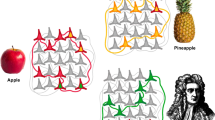Abstract
Two techniques to enhance the capabilities of a CAM-brain machine are proposed. The first is a learning capability that is realized by providing a “decay register” in each neuron cell. The second is a neural network relocation capability that makes it possible to compact the evolved neural network and make room for further evolution. Both techniques operate in an extrinsic manner and are considered supplementary to the intrinsic evolutionary capability of a CAM-brain.
Similar content being viewed by others
References
de Garis H (1996) CAM-brain: the evolutionary engineering of a billion neuron artificial brain by 2001 which grows/evolves at electronic speed inside a cellular automata machine (CAM). In: Towards evolvable hardware. Springer, Berlin, Heidelberg, New York
Gers F, de Garis H (1997) CAM-brain: a new model for ATR's cellular automata based artificial brain project. In: Evolvable systems: from biology to hardware. Springer, Berlin, Heidelberg, New York
Gers F, de Garis H, Korkin M (1997) CoDi-1 bit: a simplified cellular automata based neuron model. Artificial Evolution Conference (AE97), Nimes, France
Author information
Authors and Affiliations
Corresponding author
About this article
Cite this article
Hemmi, H., Shinozawa, K., Hikage, T. et al. Learning and relocation capabilities of a CAM-brain machine. Artif Life Robotics 3, 213–216 (1999). https://doi.org/10.1007/BF02481182
Received:
Accepted:
Issue Date:
DOI: https://doi.org/10.1007/BF02481182




